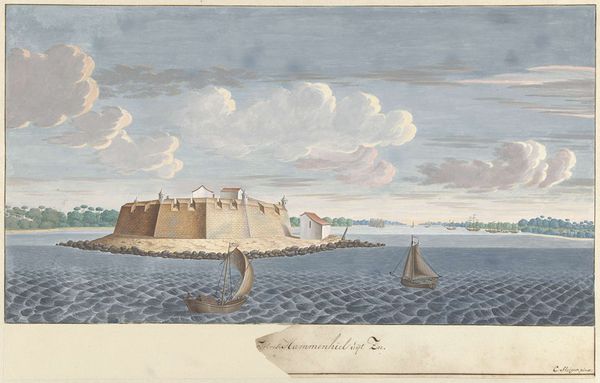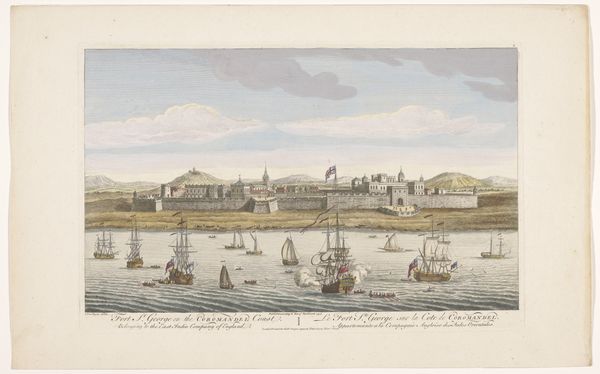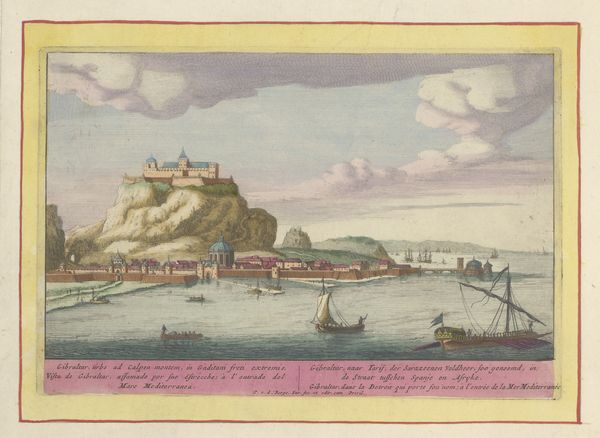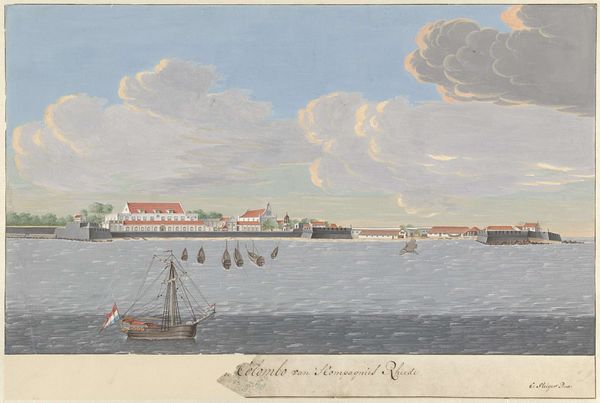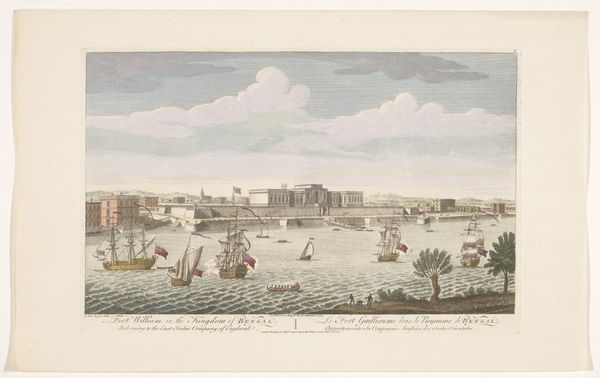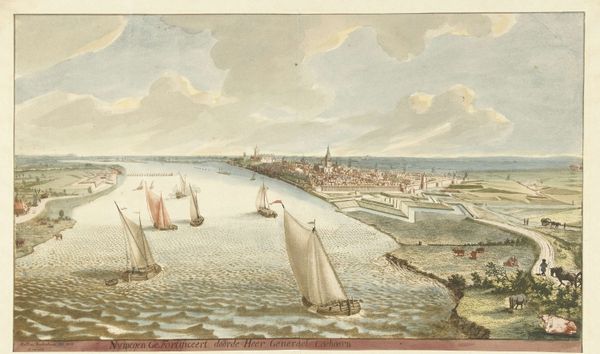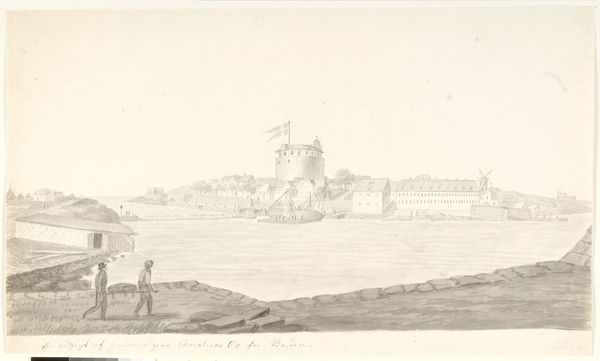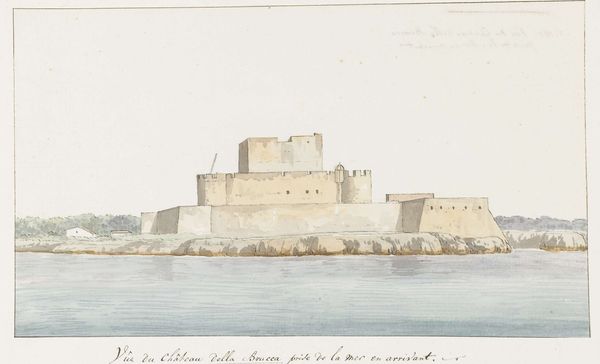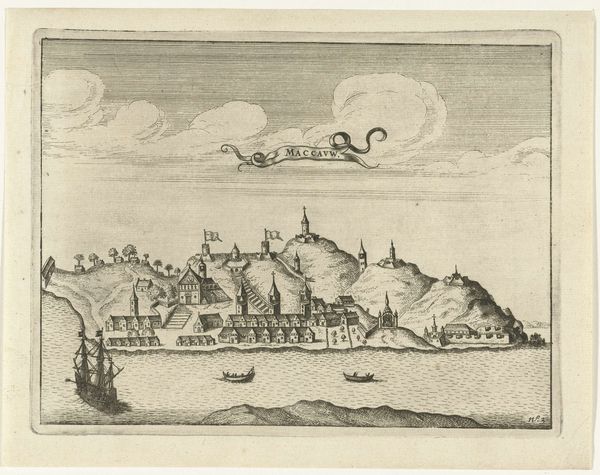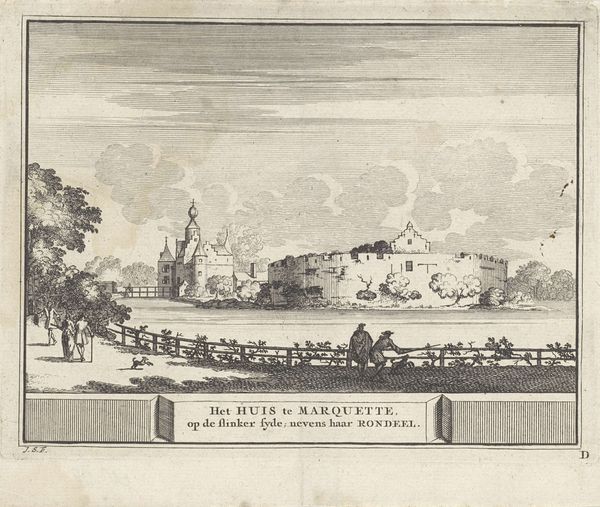
watercolor, architecture
#
dutch-golden-age
#
landscape
#
watercolor
#
watercolour illustration
#
watercolor
#
architecture
#
realism
Dimensions: height 286 mm, width 440 mm
Copyright: Rijks Museum: Open Domain
Curator: Cornelis Steiger painted this watercolor of "Het fort Hammenhiel op Ceylon" around 1710. The calm of the scene belies the Dutch Golden Age that it emerged from. Editor: My initial reaction is how restrained this is, almost muted. The fort itself, pale against the sea, seems quite unassuming. The brushstrokes are delicate, particularly in the rendering of water; what were the material constraints shaping this visual outcome? Curator: Restraint can be a virtue. Note how Steiger uses light to create a sense of depth. The subdued colors actually evoke a certain atmosphere. Ceylon, now Sri Lanka, held significant symbolic value as a coveted location during the age of exploration and was also one of the most important strategic spots on the sea trading routes in this time. Editor: The materials themselves tell a story about empire. Watercolors were easily transported, and perfectly suited for recording details for military or trading purposes, as were drawings or engravings, which, as the more reproducible image, are the most visible examples of colonial production that was enabled through industrial progress, at this time. Do you find the almost photorealistic depiction troubling given its place within such political context? Curator: Well, while there is photorealism at play here, let's also consider the iconographic implications of its style of realism, with a central image placed at eye-level, such as what we might see here in the style of this period, versus if, for example, it were captured with use of foreshortening as was developing in other areas during this time. These details play an essential role in preserving power dynamics on paper as a way of conveying political power dynamics that also prevailed at sea. Editor: Good point. It is easy to get caught up in modern artistic framings without remembering the economic value tied to images that often predates "Art for Art's Sake". In its own right, Hammenhiel is more than meets the eye; thanks for elucidating this for me. Curator: And thank you for prompting me to focus on the artistic expression, instead of being lost in what could otherwise be an endlessly complicated cultural phenomenon.
Comments
No comments
Be the first to comment and join the conversation on the ultimate creative platform.
